Large-scale farms: Can we feed the world with permaculture?
How to produce enough food without destroying the planet
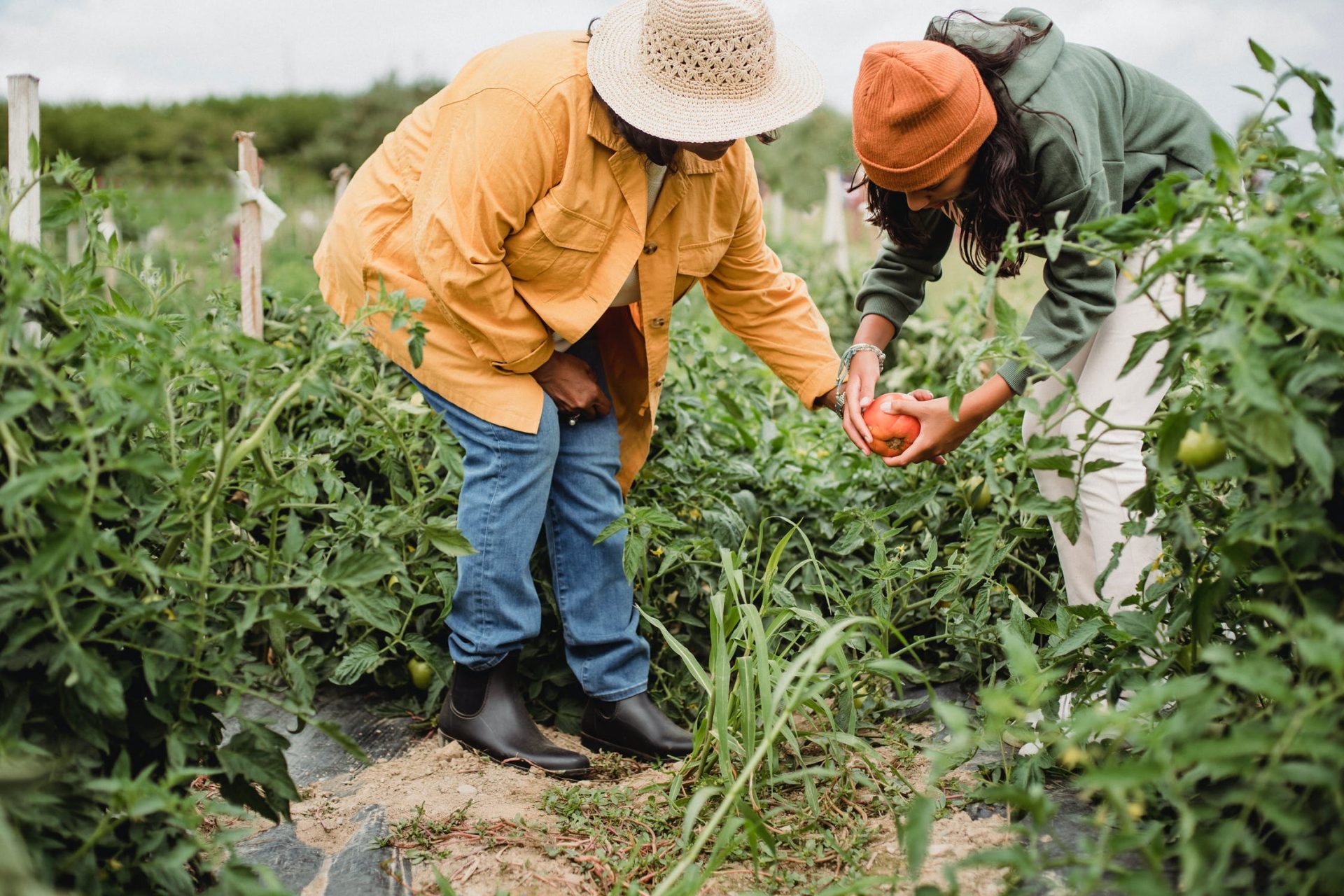
Many people wonder if we can feed the world without turning to conventional agriculture.
The trend in the last 70 years of humanity pushed for large monoculture fields, which require the input of synthetic substances to function.
In fact, having only one type of plant growing on large areas (this is called monoculture farming) involves 3 major problems.
1) Pests
A monoculture field becomes a paradise for insects that love to eat exactly that type of plant. Excessive amounts of that food makes this insect population grow exponentially, divoring the whole area. To cope with that, farmers use synthetic pesticides. These substances are problematic because they don’t only poison the unwanted insects, but all of the insects, including beneficial insects.
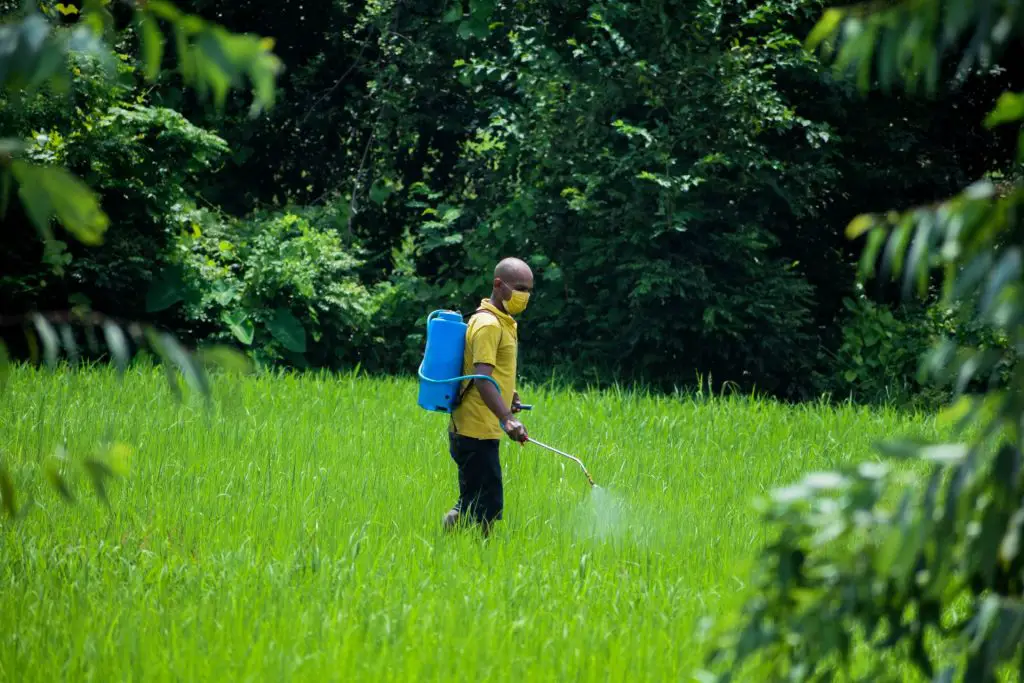
2) Weeds
Weeds happen to grow wherever there is soil, yet these plants are unwanted by most monoculture farmers. Thus, those farmers use synthetic herbicides to kill off weeds. Herbicides, including the well-known Glyphosate, are known to cause life-threatening problems to honey bees 1.
3) Poor soil
Cash crops quickly absorb all the nutrients of the soil. In the past, people intercropped cash crops with nitrogen fixing plants or nutrient accumulator plants. This is rarely the case in monoculture farming. Instead, monoculture farmers pour synthetic fertilizers on the soil, simply because it’s faster. Time is money. Those synthetic fertilizers degrade the quality of the soil and the soil life. Moreover, in many cases synthetic fertilizers leak into the ground water or other water bodies. Here they cause additional environmental problems. The infamous “dead zone” of the Gulf of Mexico or the effects that the sugar cane monoculture has on the Great Barrier Reef in Australien are horrible state-of-the-art example.
Soil, by the way, is the most important asset that we have to produce food. A healthy plant producing healthy food can only exist in healthy soil. Sadly, the above mentioned practices are not enriching the soil. The process of depleting the nutrients of a soil and never restoring it resembles more something like “mining”. Obviously, if we only take from something, we are left with nothing. Not difficult to understand, so far.
![]()
Yet, conventional agriculture causes another enormous problem. The journal Biological Conservation2 has emphasized the role of intensive modern farming as one of the main drivers of bee extinction, as well as with other insects. Synthetic insecticides and herbicides are responsible for the diminishing populations and diversity of insects, especially bees.
Why is this bad? Well, out of hundreds of crop plants that give about 90% of what people eat, 35% of the food sources exist because of pollinators, including bees, bats, and birds3. Losing our insects puts our food security in trouble.
We write on that more in our article Modern Farming as Reason for Bee Extinction.
Why is there a trend for large monoculture areas?
A little excursion to economics
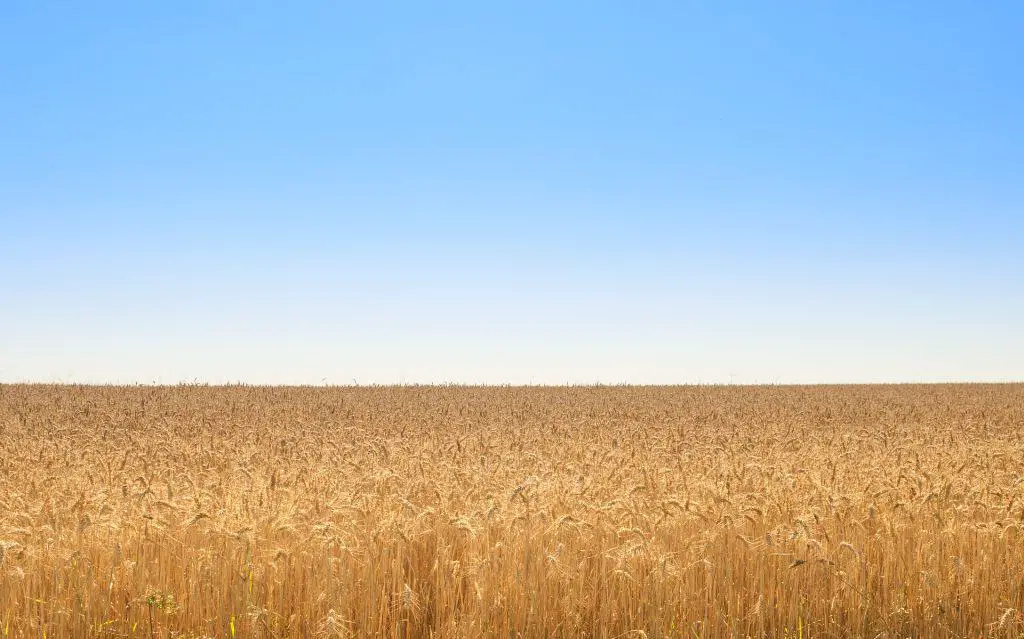
Endless wheat monoculture areas in Germany
We promise we make it VERY simple.
We said that the recent trend has lead to larger and larger fields. Why?
That is because with larger crop areas we can leverage the so-called “economies of scale“:
Translated to agriculture it means: The bigger your field is, the faster you amortize the investment of machines and the faster you cover your fixed costs. This happens because your costs are spread over a larger number of products or sales units, rather than a small number.
Now, if you spread fixed costs on a large number of sales units – you name it – your profit margin will be higher.
Differently, if you spread fixed costs over a small number, then your profit margin will be small too.
Cool, I make more money with a big field because my profit margin is higher.
But why is there a trend and almost a run to have a bigger field then?
-> If your profit margin is higher, then you can also do another trick to ensure everyone buys only from you:
You can basically give up a portion of your profit and lower the sales price.
In this way, people will be more attracted by your price, rather than the more expensive competitor’s price.
Maybe your competitor can’t lower his price, because guess what? He doesn’t have a big field. So you outcompete your competitor, just by having the possibility to offer a lower price.
What will your competitor possibly do? In most cases aim for bigger fields. This goes on and on until big farmers own areas up to thousands of hectares/acres.
At this point a little love note for economists and agronomists: We made a very simplistic explanation for the reason of larger fields. For our case, it serves the purpose.
The conclusion?
Right now, capitalism rules the economies of our planet’s countries. Prices, demand, and offer determine how an economy functions. It is how it is and there isn’t much to do about it.
We can’t stop the trend of having farmers with large areas of land.
What about small-scale farms? Should we forget about them?
ABSOLUTELY NOT: We are not saying that you can’t have your backyard garden anymore. And we also don’t mean that small farmers should not exist. Nope. Contrarily, these small-scale solutions should be there and ensure the food autonomy of small communities and neighborhoods.
We celebrate all permaculture yards, small pollinator-friendly plots, community gardens and 1-acre-farmer who do GREAT, IMPORTANT work.
In fact, Bees4life is empowering and co-founding such initiatives: Just check our Projects section. We also started Bees4life on tour. We visit people and projects who make a change towards sustainable solutions, such as eco-villages, permaculture farms, community gardens and the like.
ALSO, LET’S CLARIFY THE FOLLOWING: At the current moment, the majority (more than 90%) of all farms in this world seem to be small-scale farms, holding about 53% of all agricultural land:
The percentage of 90% is from the the Food and Agriculture Organization FAO claiming in 2014 that family farmers are feeding the world (The state of food and agriculture 2014: Innovation in family farming FAO, Rome 2014).
A family farmer was defined as a farmer owning up to 10 hectare of land, which is maybe not the little orchard that you have in mind when thinking of a “family farm”.
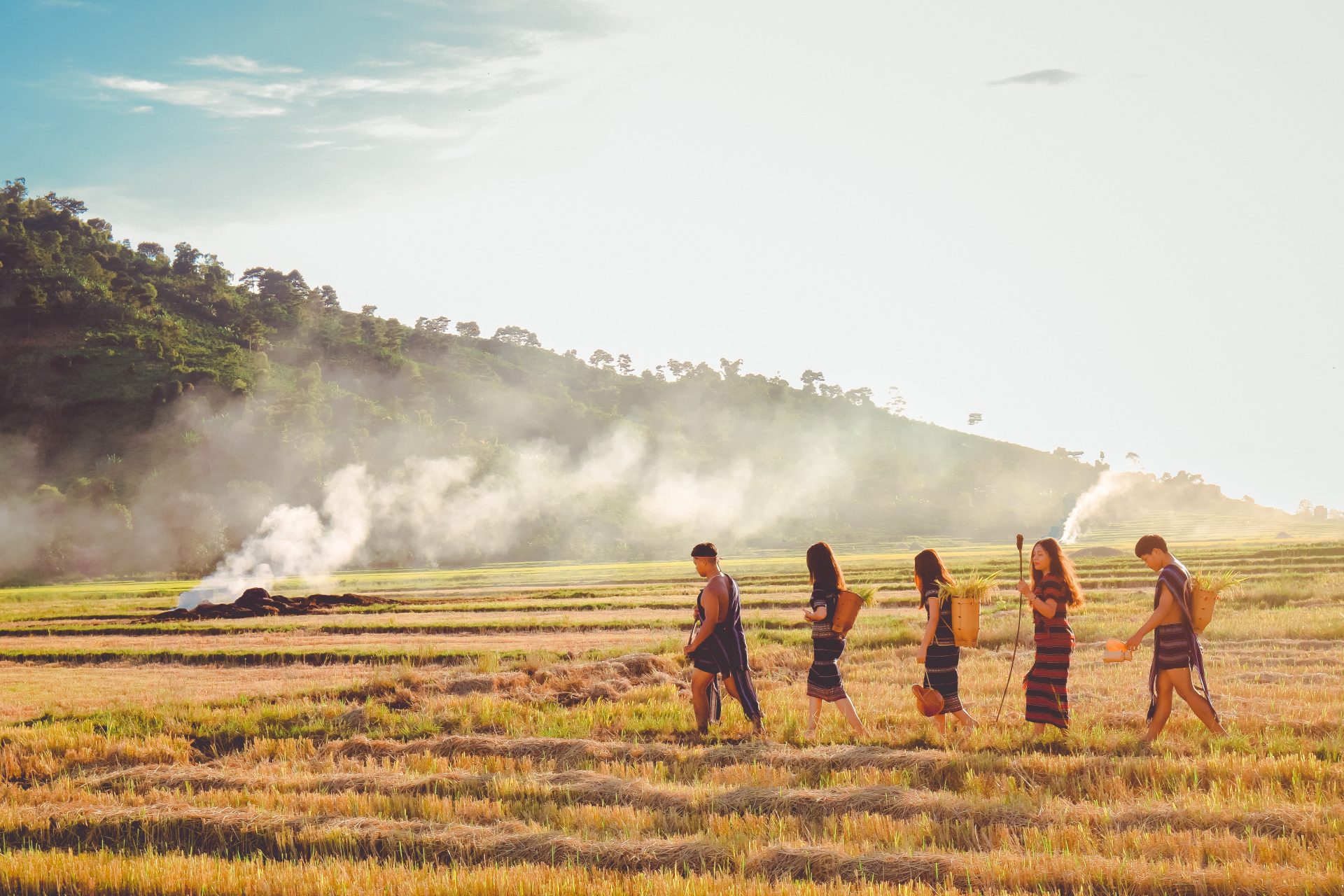
Family farm-sized farmers are still the majority, yet only holding half of all agricultural land worldwide.
On the flip side, this means that the remaining 10% of all farmers are large-scale farmers holding the remaining 47% of all agricultural land.
Summing it up: Yes, large-scale farmers might not (yet) be the majority in numbers, but they hold almost half of agricultural land (!).
How to feed the world
Still, this article is about feeding the world and also about the future trends in relation to our economical dynamics.
So back to the large fields. To feed the world, indeed it seems like we must stick to the notion of farmers with large areas of land.
Only in this way we are able to leverage the economies of scale and offer a competitive price and produce large amounts of staples and food for the broad public.
Wait, before some of you might get depressed, now we reach the exciting part!
The VERY INTERESTING question is: Do we have to stick to the problematic WAY OF MONOCULTURE FARMING?
And the happy answer is… NO!
We don’t have to. We can explore other methods of large-scale farming.
Now we can ask a few more questions and explore approaches such as:
- Can we have large fields with cash crops that are intercropped with green manure plants?
- How about large fields with cash crops consisting of different varieties of food plants and not just one monoculture crop?
- Are there large-scale farms that make money while adopting permaculture methods?
- And also: Is restoration farming or regenerative farming the real future of agriculture?
- How about agroecology and biodynamic farming? Is this possible on a big scale?
Let’s dive straight into it…
Large-scale regenerative farming and permaculture to feed the world
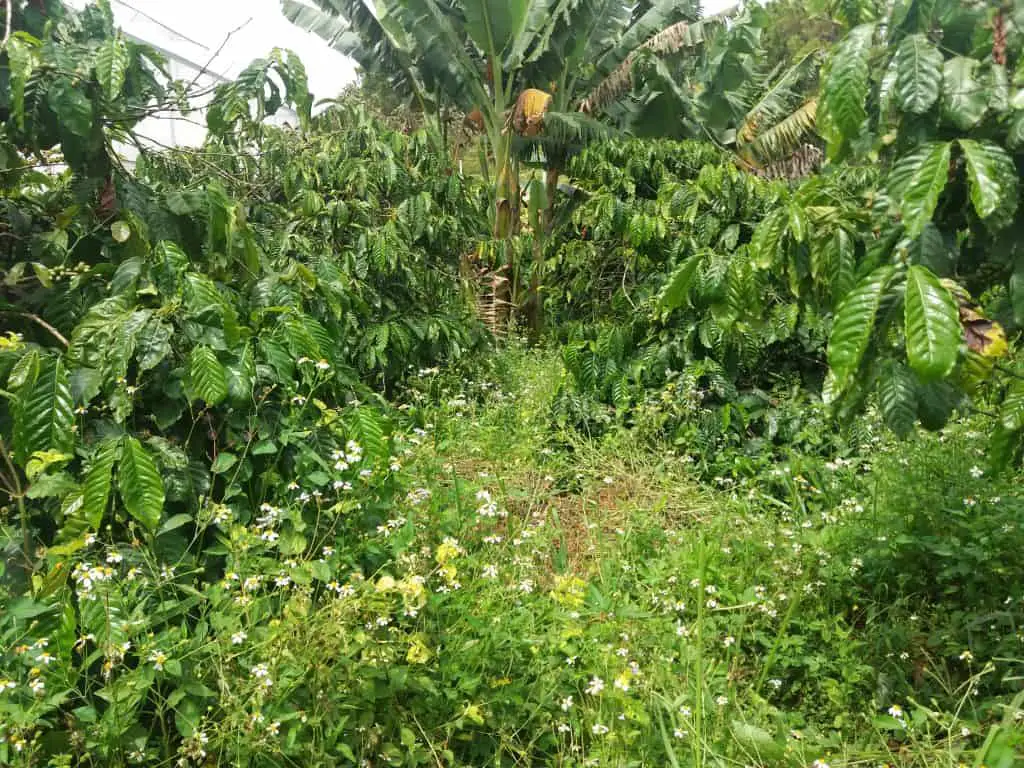
At Bui coffee farm, coffee trees are intercropped with fruit trees and weeds serve as organic matter sources and food for pollinators.
The key is to achieve a balance between production and sustainability.
Permaculture on a large scale is a beneficial method of farming that can benefit the insects as well.
Associated concepts are agroecology, restoration farming, regenerative farming, biodynamic farming, and sustainable agriculture.
Quickly, what is permaculture?
Permaculture is originally a sustainable concept for agriculture and horticulture based on closely observing and imitating natural ecosystems and cycles in nature.
The concept was developed in the 1970s by Australian Bill Mollison together with his student David Holmgren. There are different ways to accomplish permaculture, including adding fruits and vegetables with varieties of grains, ensuring the crucial existence of biodiversity.
Farmers are embracing permaculture concepts where they study the relationships between the plants in their gardens. Then, they group them and combine them. Any waste products will be reused, such as through creating fertilizers.
And what is regenerative farming?
Regenerative farming is an approach to agriculture that rejects pesticides and artificial fertilizers and aims to improve topsoil regeneration, biodiversity and the water cycle.
Regenerative agriculture integrates ideas from organic farming, permaculture, agroecology, agroforestry, and renaturation ecology. Among other goals, it represents a form of humus management.
You may ask, is it possible to achieve this balance between production and sustainability and make a profit?
We guide you through the following profitable regenerative farming businesses.
Let’s learn from these examples and understand how to feed the world without destroying the planet.
Regenerative Production of Staple Foods
Learning from Mark Shepard and his 106-acre New Forest Farm, you will see that it’s possible to grow staple foods with a restoration farming approach.
Land regeneration with animal impact
White Oak Pastures is a 3200-acre-farm producing organically grown vegetables and grass-fed, humanely treated animal products.
Permaculture Orchards
With the example the 12-acre Miracle Farms (Canada) by Stefan Sobkowiak we explore how to grow fruits on a big scale without hurting the ecoystem.
Now read about
